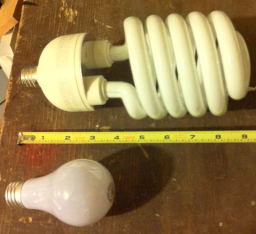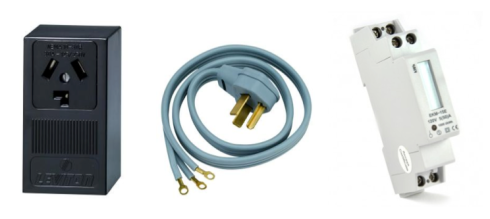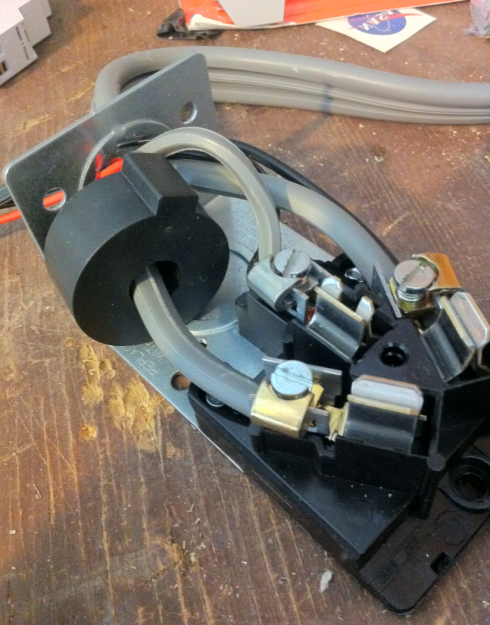Why reduce our footprint? What is the need or the drive? Does it matter? What does it change? Who cares?
I have found that in trying to answer these questions I bounce between three perspectives.

Planet-as-spaceship: A study on the physical/chemical conditions that make (human) life possible on Earth
Ecosystem-of-life: A study on how communities of humans can coexist with nature in sustainable systems.
Spiritual-community: A spiritual perspective on doing what’s right for the sake of yourself and others.
Whimsically, these three frames are typically represented using wheels, so yay.
Planet-as-spaceship
The earth is a closed system (as far as we know: except for the sunlight, radiation, and chunks of space stuff coming in; and radiation, heat and gases and spaceships going out). For life as we know it to exist in this planet (and specifically, human life) there are certain physical characteristics that need to be maintained. Scientists are making progress in determining what are the metrics within which we can live on the planet, defining what is called a ‘habitable envelope’. If environmental measurements go outside the envelope, species survival is at risk.
The best attempt at determining the key boundaries of this habitable envelope has been published by Nature in their Planetary Boundaries special issue:
http://www.nature.com/news/specials/planetaryboundaries/index.html
Here you can download the actual paper “Planetary Boundaries: Exploring the Safe Operating Space for Humanity“. Bad news is that we’ve blown three boundaries, and still can’t get a grasp on how to measure two others. Good news is that we are starting to think about, measure and track these boundaries. The worse situation we can be in is one in which we don’t even know what they are – which accurately describes the state of affairs for most of humanity’s history.
If you make lifestyle changes that help rope these 10 boundaries in, you are helping save all life.

Planetary Boundaries as published in Nature
Ecosystem-of-life
Permaculture is an area of research that takes a dynamic-systems perspective at sustainable living. The system encompasses ethics and design principles, Health & Spiritual Well-being, Finances & Economics, Resource Governance & Stewardship, Building, Technology, Education and Culture.
The core tenets of permaculture are (from wikipedia):
- Care of the Earth: Provision for all life systems to continue and multiply.
- Care of People: Provision for people to access those resources necessary for their existence.
- Setting Limits to Population and Consumption: By governing our own needs, we can set resources aside to further the above principles.
While suburban high-income environments are FAR away from a permaculture ideal, every time you help make incremental progress towards the principles outlined in the discipline you are helping in your bit. For example, you may not be involved in agricultural land stewardship, but you can decide to stop using artificial pesticides on your lawn, or replace a patch of your grassy garden with some cool vegetables and local plants. The spiral around the flower underscores the incremental nature of effort.

Permaculture Flower
Spiritual-Community
We should not discount that there are ways of life and decisions we take that make us feel better because they are right. Buddhism has developed the eightfold path “to develop insight into the true nature of phenomena (or reality) and to eradicate greed, hatred, and delusion” It is typically represented as a wheel, too. When we do things that are good for our mind, body, community, other living beings, and the planet, we feel a sense of well-being that is strong yet humble and ego-less.

The Dharma wheel, often used to represent the Noble Eightfold Path (wikipedia)
| Division |
Eightfold Path factors |
|
| Wisdom (Sanskrit: prajñā, Pāli: paññā) |
1. Right view |
Try to look at life, nature, and the world as they really are. |
| 2. Right intention |
Aspire to rid yourself of whatever qualities you know to be wrong and immoral. |
| Ethical conduct (Sanskrit: śīla, Pāli: sīla) |
3. Right speech |
Make best use of your words. |
| 4. Right action |
Avoid harm to yourself or to others |
| 5. Right livelihood |
Do not to engage in trades or occupations which, either directly or indirectly, result in harm for other living beings. |
| Concentration (Sanskrit and Pāli: samādhi) |
6. Right effort |
Make an effort to abandon all the wrong and harmful thoughts, words, and deeds. |
| 7. Right mindfulness |
Keep your mind alert to phenomena that affect the body and mind. |
| 8. Right concentration |
Meditate to supress desire, anger, sloth, restleness, and doubt. |
Conclusion – How to use the wheels
Try these wheels out when explaining to yourself or others why you want to reduce your footprint.
In different occasions, you may find it resonates more to rely on the shock of the cold realities of the physics that make life possible life, on the appeal of living integrated to our ecosystem, or the wellbeing from doing what is good for yourself and others.














 Basically:
Basically:












